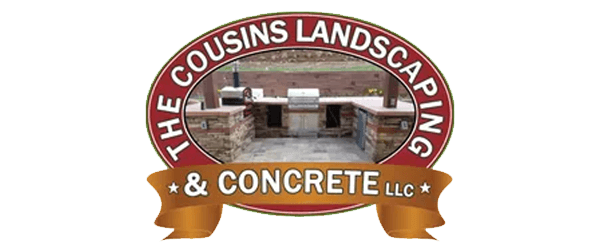
Springtime in Brighton signals the awakening of gardens and the promise of vibrant growth. However, beneath that lush surface lies a crucial preparation process. Rototilling invigorates your soil and sets the foundation for a bountiful season. This practice enhances soil structure, improves drainage, and prepares the ground for compost. For raised beds or box gardens, soil preparation is non-negotiable. Residents can benefit from expert rototilling services Brighton CO, where local soil conditions are considered.
The Importance of Soil Preparation in Gardening
Soil preparation lays the groundwork for healthy plant growth. Proper preparation breaks up compacted earth and improves aeration. It also helps integrate compost and other amendments into the soil profile. These materials supply nutrients, retain moisture, and foster microbial activity. By addressing soil pH and fertility before sowing, plants thrive naturally. Taking time now reduces future maintenance and lowers the need for synthetic fertilizers. Compost boosts nutrients while improving soil structure. After rototilling, mulch helps conserve moisture and suppress weeds. This ensures strong growth and higher yields throughout the season.
Understanding the Benefits of Rototilling
Rototilling involves breaking and turning the top soil with a mechanized tiller. This loosens compacted dirt, improves aeration, and speeds organic matter decomposition. Beneficial microorganisms thrive, and root development strengthens. Over time, soil becomes crumbly, making nutrient absorption easier. Rototilling also distributes compost evenly across beds. Local rototilling services Brighton CO adjust techniques for regional soil. This ensures drainage improves and waterlogging is minimized for spring growth.
Best Practices for Rototilling Your Garden
- Clear debris like rocks and roots before beginning.
- Till at 4–6 inches, then repeat at a shallower depth.
- Alternate tilling directions for even mixing.
- Spread compost evenly before tilling for integration.
- Check soil moisture: damp but not soggy is ideal.
Following these practices maximizes rototilling benefits. This ensures your soil is well prepared for spring planting and reduces common mistakes.
Choosing the Right Time for Rototilling
Timing is crucial for success. The ideal window is early spring, after thaw but before planting. In Brighton, this is often late March or April. Avoid tilling during heavy rains or droughts. Soil that sticks to boots or crumbles in hand signals poor timing. Waiting for optimal moisture provides uniform soil texture and prevents compaction issues.
Factors to Consider Before Starting the Rototilling Process
- Assess soil type: sandy and clay soils require different handling.
- Conduct a squeeze test for texture and moisture.
- Check pH levels and adjust with lime or sulfur if needed.
- Plan around raised beds and permanent structures.
- Ensure rototiller maintenance and operator safety.
If heavy machinery feels daunting, rely on local rototilling services Brighton CO. Professionals handle the process while you focus on compost selection.
Implementing Soil Amendments After Rototilling
After rototilling, add compost, aged manure, or leaf mold to enrich the soil. Spread a 2–3 inch layer evenly. Till again at a shallow depth of two to three inches. This prevents nutrient pockets and encourages even root growth. Light watering after mixing activates microbial activity.
Techniques for Improving Soil Structure Through Rototilling
Double tilling helps refine soil texture. First, till deeply, then shallowly. Cover crops like ryegrass also enhance soil when tilled back in. Alternating ridges and furrows benefits raised beds. Deep ridges improve root penetration, while shallow furrows conserve water. This works well in Brighton gardens with variable rainfall.
Addressing Common Mistakes to Avoid During Rototilling
- Avoid tilling soil that’s too wet or too dry.
- Limit passes to prevent disrupting soil layers.
- Skip annual tilling of perennial beds to preserve plant health.
These simple precautions help maintain soil health while maximizing garden productivity.
FAQs About Rototilling
What is the main benefit of rototilling?
It loosens compacted soil, improves aeration, and integrates compost evenly for healthier plant growth.
When should I rototill my garden in Brighton?
Early spring, once the soil is workable but not saturated, is the best time for rototilling.
Can I add soil amendments during rototilling?
Yes, compost or organic matter should be spread and tilled in for balanced nutrient distribution.
How do I know if the soil is ready?
If it forms a loose ball that breaks apart easily, the soil is ideal for tilling.
Should I hire professionals for rototilling?
Hiring rototilling services Brighton CO ensures precise depth and technique suited to local soil conditions.
Hiring Professional Rototilling Services in Brighton, CO
Professional services bring expertise, well-maintained equipment, and efficiency. They understand Brighton’s unique soil conditions and seasonal needs. Moreover, they offer advice on compost blends for nutrient balance. Their turnkey approach saves time and effort, letting you focus on planting. Reach out today through our contact page to discuss your garden preparation needs.
Setting Your Garden Up for Spring Success
By focusing on soil preparation and rototilling, you create a fertile foundation for growth. Compost and amendments distribute evenly, ensuring healthy roots and balanced nutrients. Whether you till yourself or hire rototilling services Brighton CO, your investment guarantees a thriving garden. From raised beds to box gardens, proper preparation leads to strong, beautiful spring growth.
